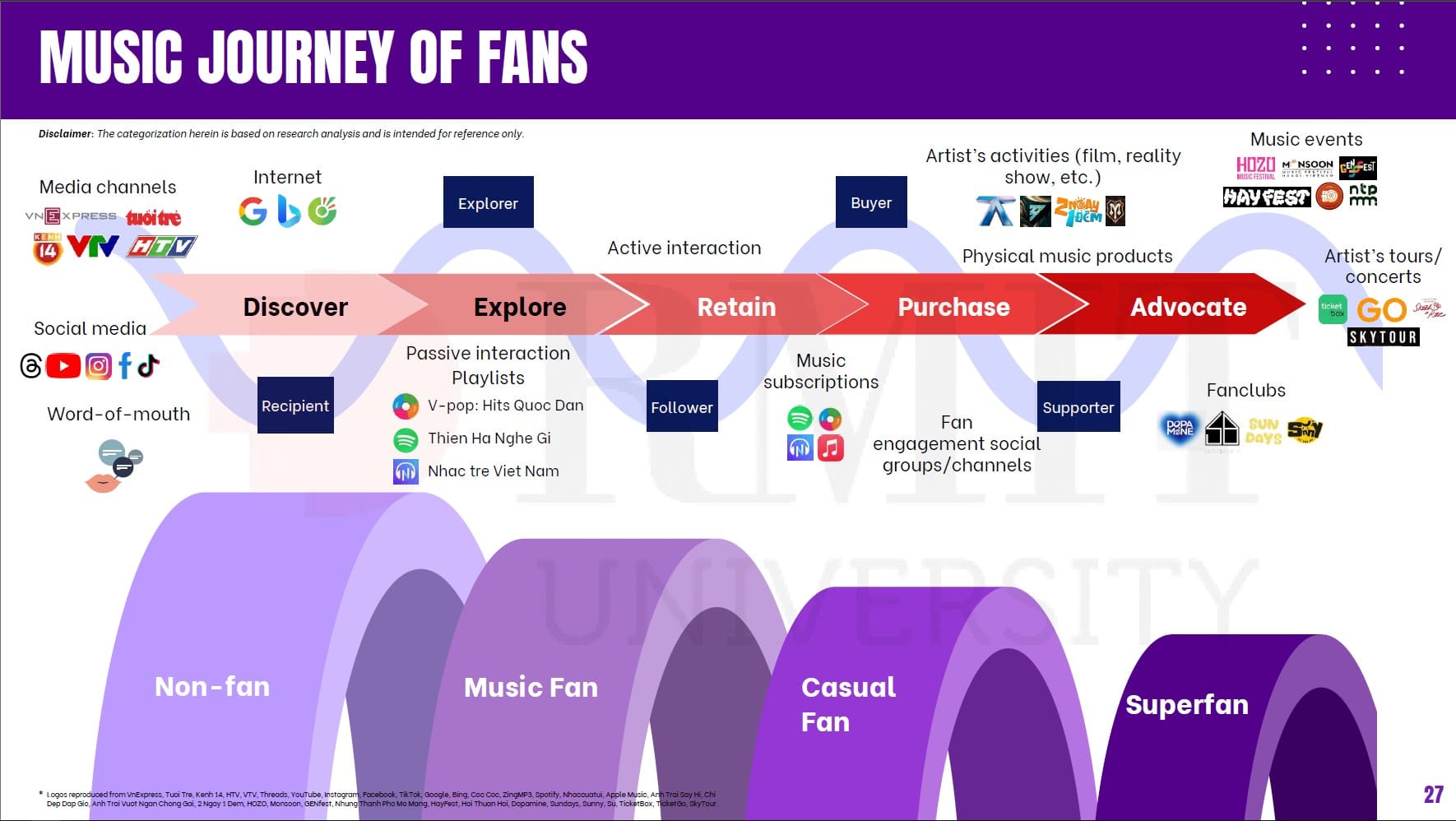Superfans are the most loyal, actively supporting artists by buying albums, attending shows, and dedicating time and money to following them. Representing 13 per cent of the fan base in Vietnam, superfans are willing to spend over 500,000 VND monthly on subscriptions to digital music platforms, artists’ broadcast channels, and fan clubs’ social media groups, as well as on albums, singles, physical discs, merchandise, and co-branded artist products.
The vibrant activity of passionate superfans is significantly impacting Vietnam's music industry. With over 75 per cent of music consumption focused on domestic products, superfans, particularly those from Gen Z, are crucial in boosting the popularity of local artists. These fans are not passive listeners, they actively promote their idols, buy concert tickets, and elevate artists to the top of platforms like YouTube and Spotify. Inspired by K-pop culture, this model often succeeds due to strong social media engagement and event participation.
Superfans wield considerable influence over artists' careers, providing enthusiastic support, but “potentially withdrawing if their expectations are unmet,” said Associate Professor Long.
“This dynamic offers opportunities for deeper fan connections while presenting challenges in managing artists' public images. Artists and their management teams must carefully navigate fan expectations and maintain a positive image to avoid alienating their dedicated fanbase.”
According to the Global Creativity Index, Vietnam ranks 44th worldwide and 4th in Southeast Asia in terms of the growth level of the Creative Economy sector. Interim Dean of the School of Communication & Design, Associate Professor Donna Cleveland, emphasised that under government guidance, Vietnam's cultural industry is becoming a vital pillar of the national creative economy.
“By harmonising creativity, production, and commercialisation, the industry not only generates significant economic value but also contributes to preserving and enhancing the nation's cultural identity. The potential for sustainable growth, particularly in digital music, will serve as a strong impetus for Vietnam to affirm its position on the global cultural industry map,” she said.
Story: Ha Hoang
Masthead photo: tsuguliev – stock.adobe.com
Thumbnail photo: Tomasz Zajda – stock.adobe.com








